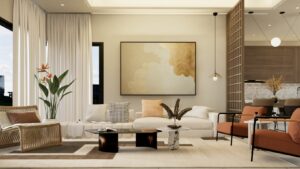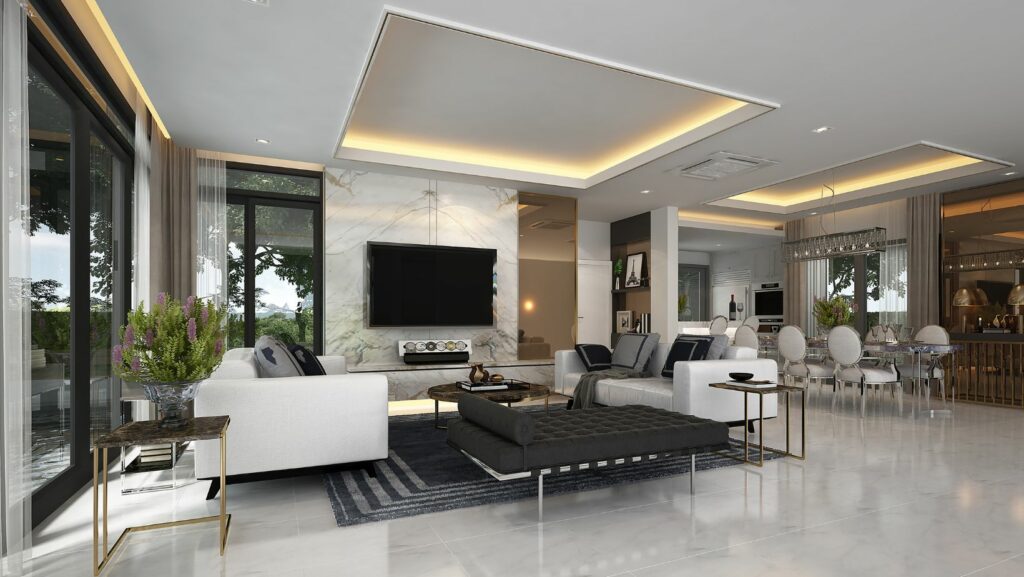Living in a compact home doesn’t have to mean living in a cramped one. In fact, with clever design, even the smallest studio can feel spacious, open, and welcoming. But too often, good intentions turn into design blunders that make a home feel even more claustrophobic. The good news? These are usually easy to fix—once you know what to look for.
Before you start any major apartment renovations, it’s worth checking whether small, subtle design tweaks could unlock a better sense of space. In many cases, it’s not about how much room you have—it’s about how you use it.
Overlooking Natural Light
Light has the power to make a room feel bigger, brighter, and more breathable. But it’s often sacrificed for heavy drapes, bulky furniture, or dark colour schemes. Blocking windows, using opaque window coverings, or placing large furniture near your only source of light can dramatically shrink a space visually.
Try this instead:
- Use sheer curtains or light-filtering blinds
- Avoid placing tall furniture directly in front of windows
- Use mirrors strategically to bounce natural light around the room
Using Dark or Saturated Colours
Deep colours can be beautiful, but in small rooms, they often absorb light and close things in. A dark navy wall might add drama in a large lounge, but in a tiny bedroom, it can feel like the walls are closing in.
Fix it with:
- Light, neutral tones for walls, ceilings, and large furniture
- Adding colour through accents like cushions, art, or a feature rug
- Painting trim and doors the same colour as the walls to visually expand the space
Too Much (or Oversized) Furniture
Nothing shrinks a room faster than furniture that doesn’t fit. Whether it’s an overstuffed couch, a bulky entertainment unit, or too many side tables, oversized or excessive furniture leaves little breathing room.
Solutions that work:
- Choose multi-functional furniture like ottomans with storage
- Select pieces with exposed legs to allow light and air to flow beneath
- Leave enough space between furniture to create easy movement paths
Pushing Everything Against the Walls
It might seem logical to push furniture right up against the walls to “open up” the centre of a room, but this actually does the opposite. It makes the space feel rigid and boxy, with no flow.
Instead:
- Pull furniture slightly away from the walls to create more defined zones
- Use rugs to anchor areas and suggest spaciousness
- Angle pieces like chairs or lamps to break up straight lines
Cluttered Surfaces and Wall Space
Small homes require a minimalist mindset. Even a few too many trinkets or picture frames can tip the balance from cosy to chaotic. Cluttered walls, shelves, or countertops reduce visual space and contribute to mental fatigue.
Try simplifying with:
- Fewer, larger art pieces instead of many small ones
- Closed storage solutions to hide visual clutter
- A one-in, one-out rule for decor items
Skipping Vertical Space
When space is tight, it’s easy to focus only on what’s happening at eye level. But vertical space is often underutilised. From tall bookcases to vertical storage or hanging plants, going “up” creates the illusion of height and draws the eye away from the floor.
Ideas to implement:
- Floor-to-ceiling shelving or cabinets
- Wall-mounted lighting instead of table lamps
- Tall mirrors or art pieces to elongate the room visually
Ignoring Cohesive Design
A mishmash of styles, colours, and textures can make any space feel disjointed, but in small homes, it’s especially jarring. A consistent design theme helps unify your home and makes each area feel connected rather than chopped up.
To create flow:
- Stick to a limited colour palette
- Use repeating textures or finishes (e.g. brass handles, light wood tones)
- Choose furniture that shares a similar design language
Skimping on Lighting Layers
Relying solely on one ceiling light creates harsh shadows and leaves corners in darkness. Layered lighting—using ambient, task, and accent light—adds warmth and depth that tricks the eye into seeing more space.
Level up your lighting:
- Add floor lamps or sconces in dark corners
- Use under-cabinet lighting in kitchens and bathrooms
- Incorporate dimmers to adjust mood and brightness as needed
Start With Function, Then Style
A beautiful room that doesn’t work will always feel uncomfortable. Before making any design decision, ask: Does this make the space easier to live in? Does it solve a problem?
 With small homes, every item counts. That doesn’t mean you have to live without personality—but it does mean every piece should earn its place.
With small homes, every item counts. That doesn’t mean you have to live without personality—but it does mean every piece should earn its place.
The right design choices won’t just make your home look bigger—they’ll make it feel better, too.

